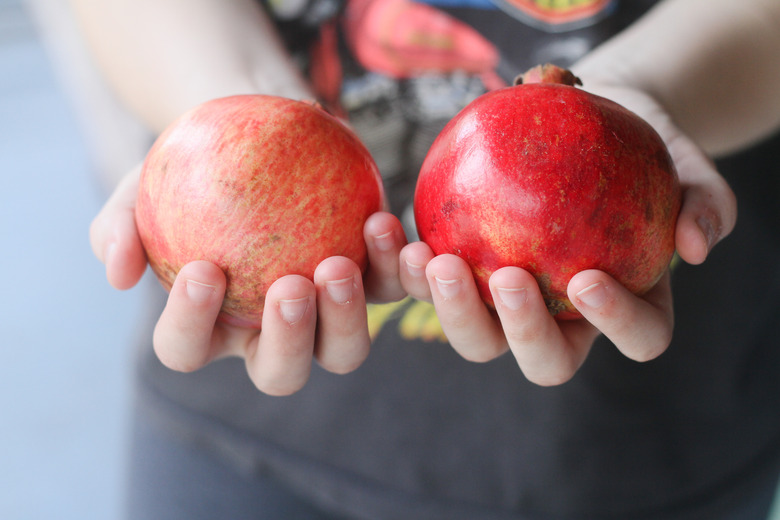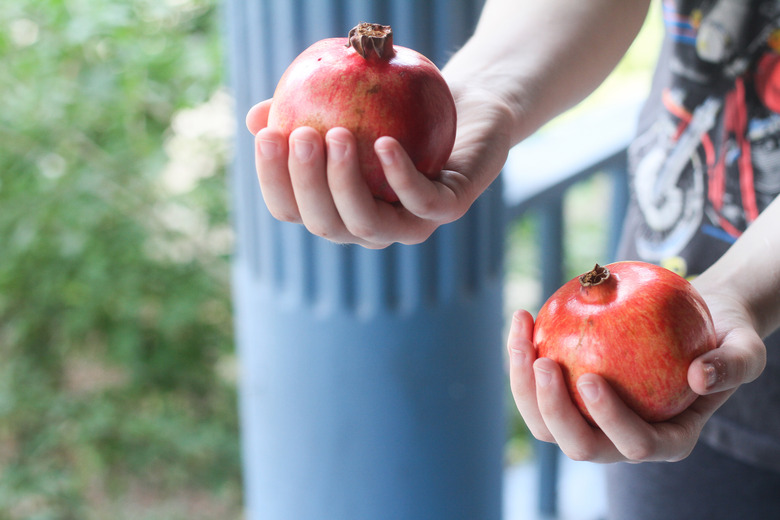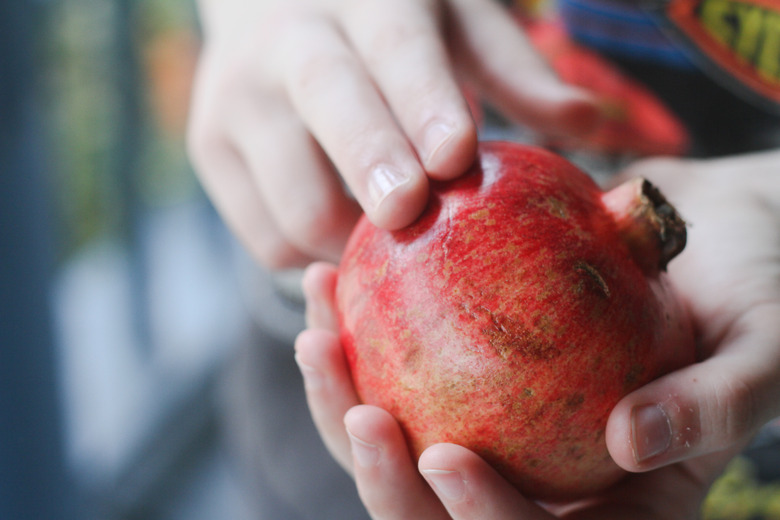How To Tell If A Pomegrante Is Ripe?
Pomegranates are versatile fruits, which are used in a variety of juices, jellies and sauces. This juicy fruit is also a candidate for eating plain or for use in dessert flavoring or wine. If your intention is to pick ripe pomegranates, knowing what to look for is essential. Avoid choosing fruit that is under or over-ripened by making careful observations.
Step 1
Assess the color and condition of the skin. Ripe pomegranates range in colors from dark pink to deep red and feature shiny skin, with no cracks or blemishes. Unripe pomegranates feature lighter skin, which may even appear green or yellow. Overripe pomegranates are darker in skin color and often contain cracks and blemishes.
- Pomegranates are versatile fruits, which are used in a variety of juices, jellies and sauces.
- Ripe pomegranates range in colors from dark pink to deep red and feature shiny skin, with no cracks or blemishes.
Step 2
Check out the size and weight of the fruit. Keep in mind that ripe pomegranates are usually the size of softballs, while unripe pomegranates are smaller. Place a pomegranate of unknown status in your extended arm and open palm. Gently clasp the fruit, while raising and lowering your arm two to three times to assess the heaviness of the fruit. Repeat this process with an unripe pomegranate for comparison. Ripe pomegranates will be heavier than unripe fruit because they contain more juice and larger seeds.
Step 3
Listen to the sound the pomegranate makes when tapped. Hold the pomegranate of unknown status in one hand, while using your index finger to tap the outer skin two to three times. Ripe pomegranates produce a "metallic" sound when tapped due to the large amount of juice inside the fruit. Unripe pomegranates produce a hollow sound, while overripe pomegranates produce muted sounds and may bruise when tapped.
- Check out the size and weight of the fruit.
- Hold the pomegranate of unknown status in one hand, while using your index finger to tap the outer skin two to three times.
Pick A Ripe Pomegranate
Pomegranates are not native to the United States, but according to Clemson University Cooperative Extension, they got here as quickly as possible, traveling with the Spaniards who founded America's oldest city, St. Augustine, Florida. These are the areas where pomegranate trees are more likely to produce fruit. During the first year of growth, a pomegranate tree may produce a few fruits, but the first real harvest will not occur until two or three years after planting. Flowers appear on new growth of the pomegranate tree from late spring through early fall. The color, arrangement and style of the flowers depends on the cultivar.
Tip
The ripeness of a pomegranate affects the taste of the fruit. Unripe pomegranates may feature harder, more sour seeds, while overripe pomegranates may feature mushier, sweeter seeds.



